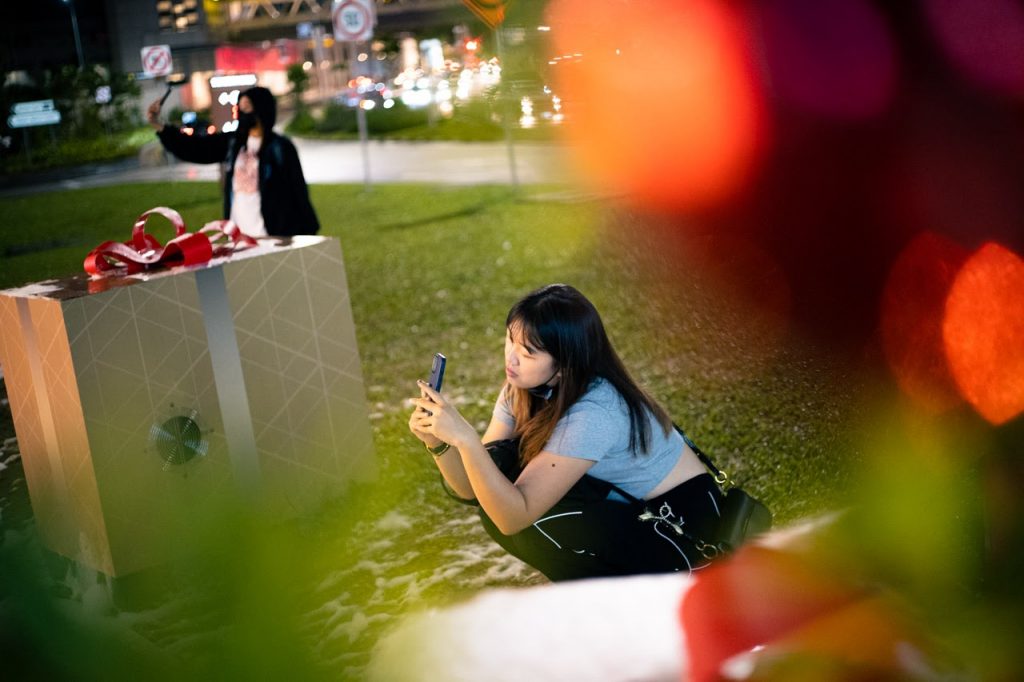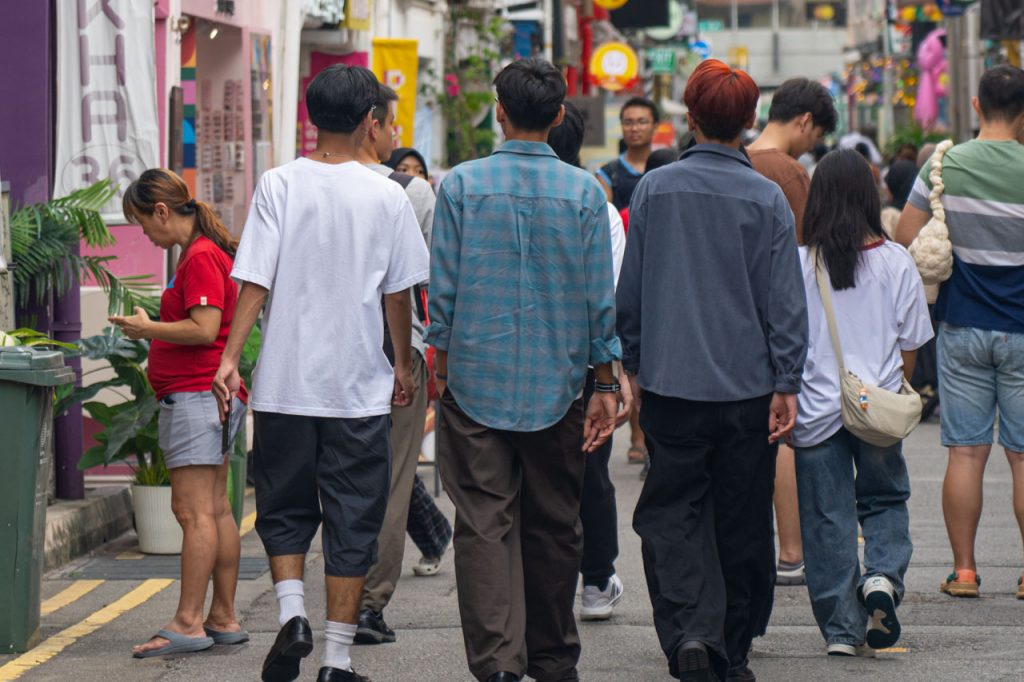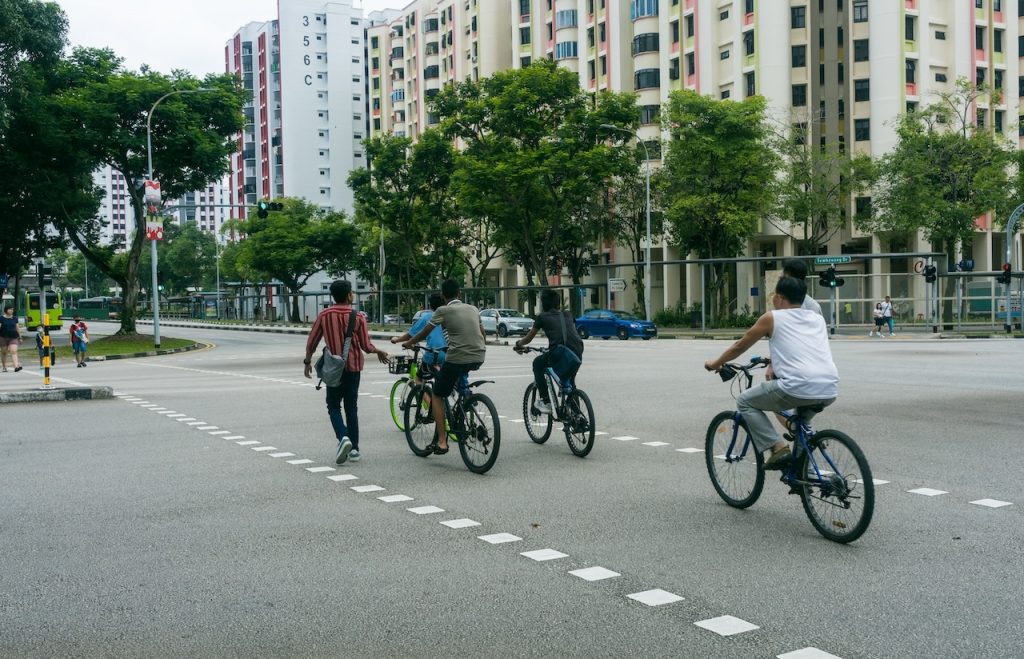This story is part of RICE Media’s Storytellers initiative, a mentorship programme for budding content creators to learn about the art of creative non-fiction. This piece is a product of a partnership between RICE Media and Singapore Management University (SMU) for its Professional Writing module.
Top image: Isaiah Chua / RICE file photo
James* watches the Montfort school bullying video. The video, which went viral on Facebook in early 2025, shows young boys converging on a schoolmate. Then comes the shoves, punches, and laughter.
Eight years earlier, James had played the ‘lead role’ in a viral video just like this one.
“I remember it like it was just yesterday,” he recalls.
Now 24, he’s no longer a school bully. But he’s still deeply haunted by his past: “It felt good to be feared at first, but it all came crashing down when I was hit with the consequences”.
It goes without saying that bullying is a serious issue; according to a study led by the National Institute of Education (NIE), about one in four primary school students experienced bullying, with a small number saying they were bullies themselves.
But what happens when students like James are publicly condemned long after they’ve changed, when their past mistakes continue to define them?

A System That Breeds Pressure
Singapore often prides itself on its world-class education system. But this same system has fostered a hyper-competitive environment, where academic excellence becomes a relentless pursuit.
This environment brings with it immense pressure: Constant comparison with peers, high expectations from parents, teachers, and the societal pressure to achieve.
Some rise to the occasion; many keep their heads down and endure the road to graduation. Others, however, act out.
For James, bullying was a violent—albeit misguided—method of stress relief. James says he went to a prestigious secondary school where he often felt ostracised by his peers, who were much more “academically gifted”.
“The pressure of performing was immense. My parents put too many expectations on me, and I couldn’t take it.”
James resorted to unhealthy coping mechanisms. He started to harass his peers, often beating up those who were physically weaker than him.
“Each punch felt like a part of my stress being relieved,” James recalls shamefully.
Is this a justification towards bullying? No. None of this excuses what James did.
But it’s worth considering the systemic factors that could cause kids like James to act out and the long-lasting impact of a video gone viral.
When School Fights Go Viral
According to James, bullies go to great lengths to “increase [their] reputation” as an intimidation tactic.
Where he once verbally boasted about the pain he inflicted on other students, today’s bullies turn to social media—uploading videos of their actions to broadcast dominance, earn validation, and inflict further emotional pain on the victim.
Such cases are prevalent enough to create an impact among policymakers. In response to the Montfort case, former second Minister of Education, Maliki Osman, proposed enforcing punishment for those who film such videos—and that the instigators and bystanders would “share the responsibility” and be “punished appropriately”.
“This is to remind them not to do so, to avoid further hurting the ones who are involved and to highlight to them that by sharing the recordings, they are endorsing the acts and are complicit in the act,” Mr Maliki noted.
“This will also mitigate the impulse to normalise or chase the extremes in the contest to circulate ever more startling videos and content.”
Online, the reactions were far more vitriolic. Many called for harsh punishment, with comments reflecting a desire to see these teens’ futures derailed as retribution for their actions. Any pleas for proportionality often drown in the roar of viral outrage.
To James, it all feels eerily familiar—the shame, the judgment and the impossibility of redemption in the court of public opinion.

Social Media: Judge, Jury, Executioner
James recalls the moment his bullying days finally caught up to him.
He was in the middle of class when the principal made an announcement asking for James to report to the general office. Earlier that week, he got into a scuffle with another classmate due to jealousy and stress.
The shove and kicks were impulsive, fueled by his friends’ laughter. Someone’s phone was out, recording footage—not for Instagram or TikTok, but for the class WhatsApp group. Back then, in 2016, that was enough.
By the end of the week, the 30-second clip had escaped their class group chat and migrated to the group chats of everyone else in his school. Even official class groups with form teachers were not spared.
The school suspended him for two weeks. He was already used to this; it wasn’t the first time he’d gotten in trouble, he says.
This time, however, it was different—the video was shared on social media. His parents yelled at him, his teachers scolded him, and James learned his lesson. Eventually, while those around him were ready to move on, the internet didn’t.
James believes that the video was the reason for getting rejected when he applied for the Ngee Ann Polytechnic Early Admission Exercise. During the interview, one panellist asked James: “Were you involved in that bullying case a few years back?”
“When I heard that, I knew it was over.”
There could have been other reasons for the rejection. But from that moment on, James carried a quiet dread that his past would follow him wherever he went—be it in his personal or professional life.

Tan, a secondary school teacher for 10 years, has watched this cycle repeat itself. Tan was not James’s form teacher—just another educator in Singapore’s system.
“We suspend [bullies], call the parents, and think the lesson is learned,” he says.
“But what are the real consequences? Those come later. And by then, it is out of our hands.”
He has seen former students struggle to secure jobs because of old WhatsApp screenshots. He has watched boys like James become adults trapped by their pasts.
“I always feel bad for the victim, but I empathise with the bully,” Tan offers.
James doesn’t deny that he deserves consequences. But he questions whether they should last forever.
“I was both lucky and unlucky,” he said. “Unlucky in terms of the video being filmed and uploaded, lucky that the video only spread across the school and some parts of the internet.”
Others may not be so fortunate. The Montfort Secondary School students’ faces are etched into the collective memory of the internet.
Yes, the bullies deserved to be judged and punished for their actions. But should those lapses in judgment define who they are for life? Should one give up on one’s future because of a teenage mistake and carry on the path of no return?

To Punish or Not to Punish?
Let me be clear: I am not saying that bullies should not be punished severely. The reality is far more complex.
When a 15-year-old intentionally torments a peer, films it for social status, and spreads that humiliation online, it is not just a ‘mistake’—it is a deliberate act of violence.
Yet here is the paradox: while bullying often stems from trauma, that explanation does not grant them a pass.
We must strike this balance: holding bullies accountable does not preclude improving mental health support or digital literacy.
At its core, it is about justice and how it is implemented. Victims’ trauma is long-lasting—why shouldn’t perpetrators face consequences that match the severity of their actions?
We offer one narrative to victims: It gets better. But for bullies? Shame has no expiry date.
James’s story and the Montfort video force us to confront our contradictions: Do we believe in redemption or retribution?
The internet delivers life sentences. But schools, communities, and families have a chance to offer something else: consequences with room for change. Punishment that teaches, not just destroys.
Yes, the Montfort bullies deserve to be held responsible. But they also deserve the possibility of being more than their worst moment.
When netizens demand bullies’ futures be ‘compromised,’ we must pause: Is permanent stigma truly the solution—or are we just perpetuating the cycle of violence we claim to condemn?






